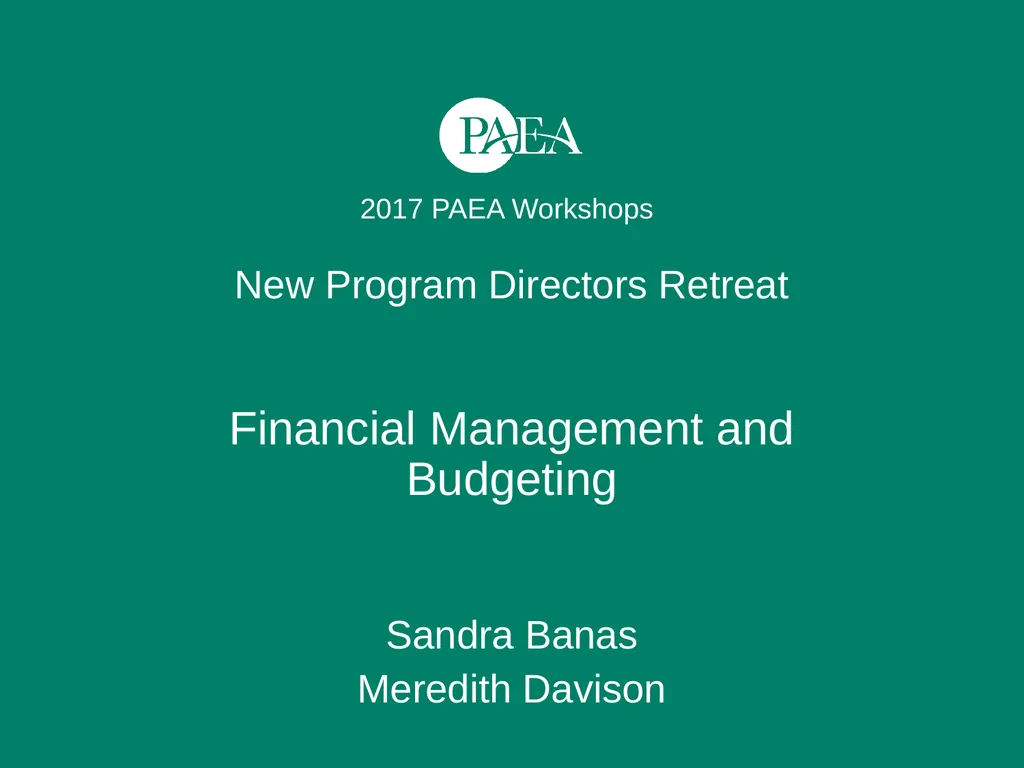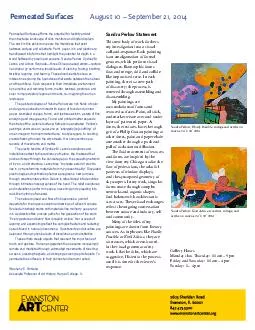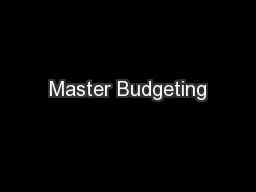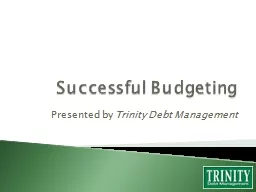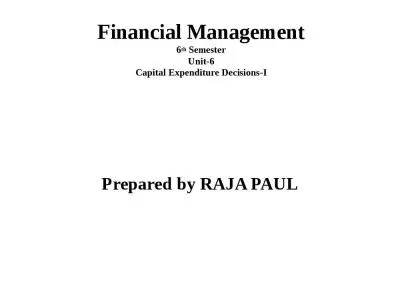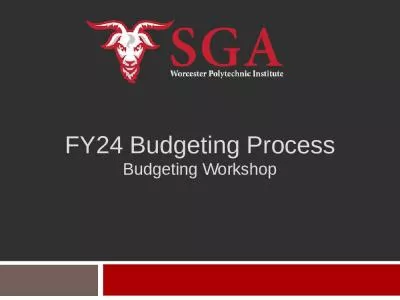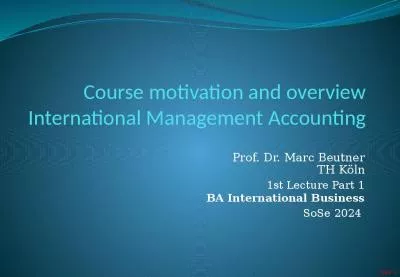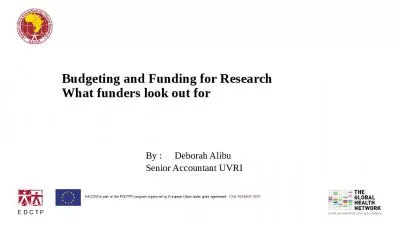Financial Management and Budgeting Sandra Banas
Author : karlyn-bohler | Published Date : 2025-06-23
Description: Financial Management and Budgeting Sandra Banas Meredith Davison New Program Directors Retreat Objectives Define budget accrual capital expense direct expense indirect expense discount rate encumbered FTE fixed expense variable
Presentation Embed Code
Download Presentation
Download
Presentation The PPT/PDF document
"Financial Management and Budgeting Sandra Banas" is the property of its rightful owner.
Permission is granted to download and print the materials on this website for personal, non-commercial use only,
and to display it on your personal computer provided you do not modify the materials and that you retain all
copyright notices contained in the materials. By downloading content from our website, you accept the terms of
this agreement.
Transcript:Financial Management and Budgeting Sandra Banas:
Financial Management and Budgeting Sandra Banas Meredith Davison New Program Directors Retreat Objectives Define: budget, accrual, capital expense, direct expense, indirect expense, discount rate, encumbered, FTE, fixed expense, variable expense, variance & YTD Describe the purpose of budgeting List, compare and analyze different budget systems List and describe the three types of budgets Explain the budget cycle and its relationship with planning Identify internal and external resources to designing office / classroom space 2 Initial Considerations Expectations of the middle manager Limitations Control Resources Variability: institutional 3 Definitions Budget Financial plan of expenses & revenue used for planning & control purposes Developed using goals, objectives and priorities 4 Definitions Accrual Expense or revenue that increases with the passage of time Accrual-based accounting Income posted when earned Expenses posted when they occur Cash-based accounting Expense recognized when money actually spent Income credited when it is received 5 Definitions Capital expense Investment that is useful for more than one accounting period Depreciation Direct expense Expenses which are completely related to core business operations Controlled by the program director 6 Definitions Discount rate Average percentage of tuition amount decreased by in-house scholarship awards Encumbered Outstanding financial obligation not yet dispersed FTE Full time equivalent. Example: 1.0, 0.5 etc. 7 Purpose of the Budget Planning Tool Monitoring Tool Evaluation Tool Control Tool Quality Improvement Tool 8 Budget Systems Incremental Prior year’s budget serves as a base Based on Previous year’s budget performance % increase or decrease Zero-Based Each cycle starts with clean slate Based on Justification of activities Objectives 9 Budget Systems Line-item Divided into: Organizational units Cost centers or academic departments Expenditure categories Formula budgeting Formulas for allocation Workload formula Student enrollment or credit hours x $ = $$ budgeted 10 Questions to Think About What are the major issues and challenges faced by the Program? What are the major opportunities for the Program in the next 3 to 5 years? What are possible areas for cost reduction for the Program? What are the possible areas for revenue generation for the Program? 11 Components of a Budget Revenue Allocated for maintenance and growth Tuition, grants and other revenue projections State appropriations Revenue Based on Past performance New factors Class size changes External circumstances Reported in student head count or cash Should be realistic Avoid high and low estimates 12 Components of a Budget Capital Expense Large investments Equipment Renovations Usually centralized Depreciation Operating
